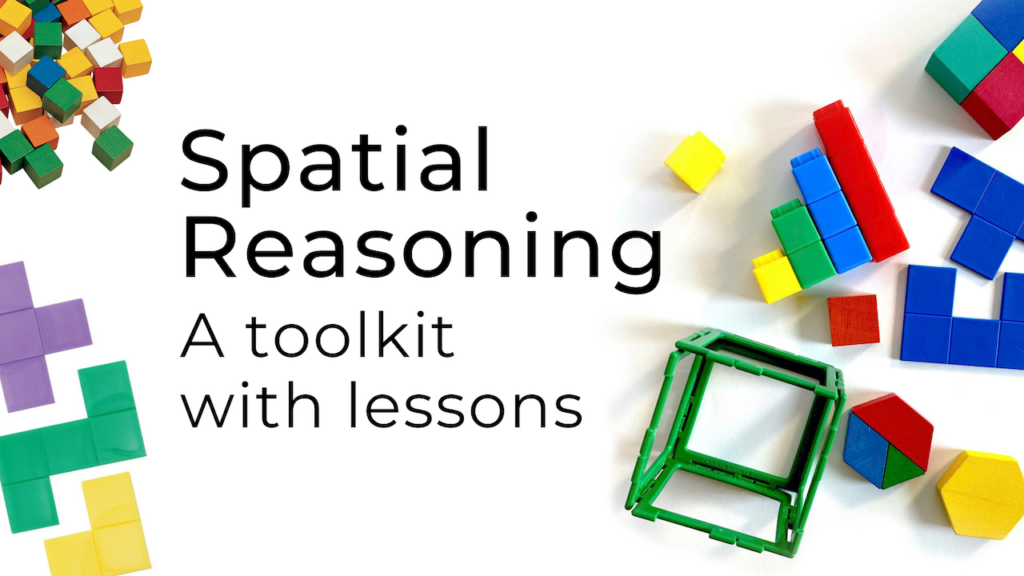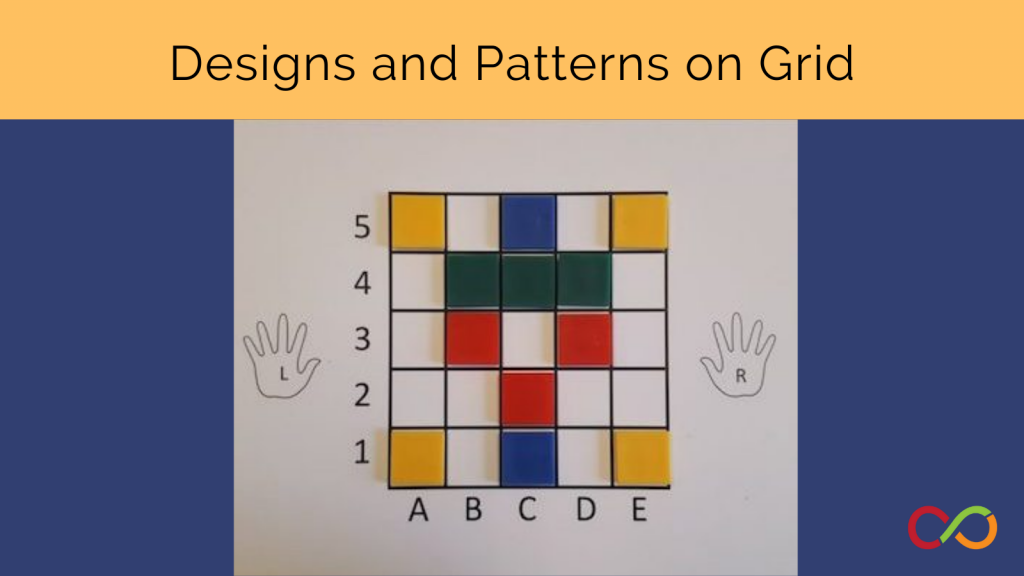Pentomino Battleship
Primary/Junior (Age 6 – 12)
Curriculum Goal
Primary and Junior: Geometry and Spatial Sense
- Plot and read coordinates in the first quadrant of a Cartesian plane.
Context
- This game can be played as a teacher-led game or a barrier game.
- If students are unfamiliar with coordinates, play the warm-up game first.
Materials
- 1 Pentomino set per Player 1
- Multiple square tiles in 2 different colours per Player 2
- 1 Game board per player (Appendix A)
Lesson
Part 1: Pentominoes on Grid
- Pairs of students sit facing each other, with a barrier in between.
- Player 1 secretly places two pentomino pieces on their game board (Fig. 1).
- Player 1 calls out, one at a time, the letter-number coordinates for where the pentominoes are placed. They will also refer to a different tile colour for each pentomino shape (e.g., place a yellow tile on A4).
- Player 2 follows the instructions to place the square tile in the correct spot.
- Repeat this process (e.g., red on D3, yellow on A2, red on E3, etc.) until the two pentomino shapes are created on Player 2’s game board (Fig. 2).
Part 2: Pentomino Battleship
- Player 1 secretly places two pentomino pieces (“battleships”) on their game board (Fig. 3).
- Player 2 calls out a letter-number coordinate.
- Player 1 reveals whether it’s a hit or a miss and Player 2 will place a tile on the target grid accordingly (e.g., blue for hit, yellow for miss).
- Players continue until the two pentomino battleships have been “sunk” (Fig. 4).
Look Fors
- Can children accurately describe the location of their pentominoes?
- When playing battleship, what strategies do children use to plan their next move? For example, do they predict what pentomino they may need to sink and select coordinates appropriately?
- What spatial language do children use?
Share this lesson
Share on facebook
Share on twitter
Share on email


